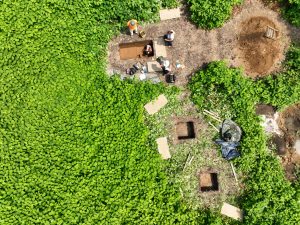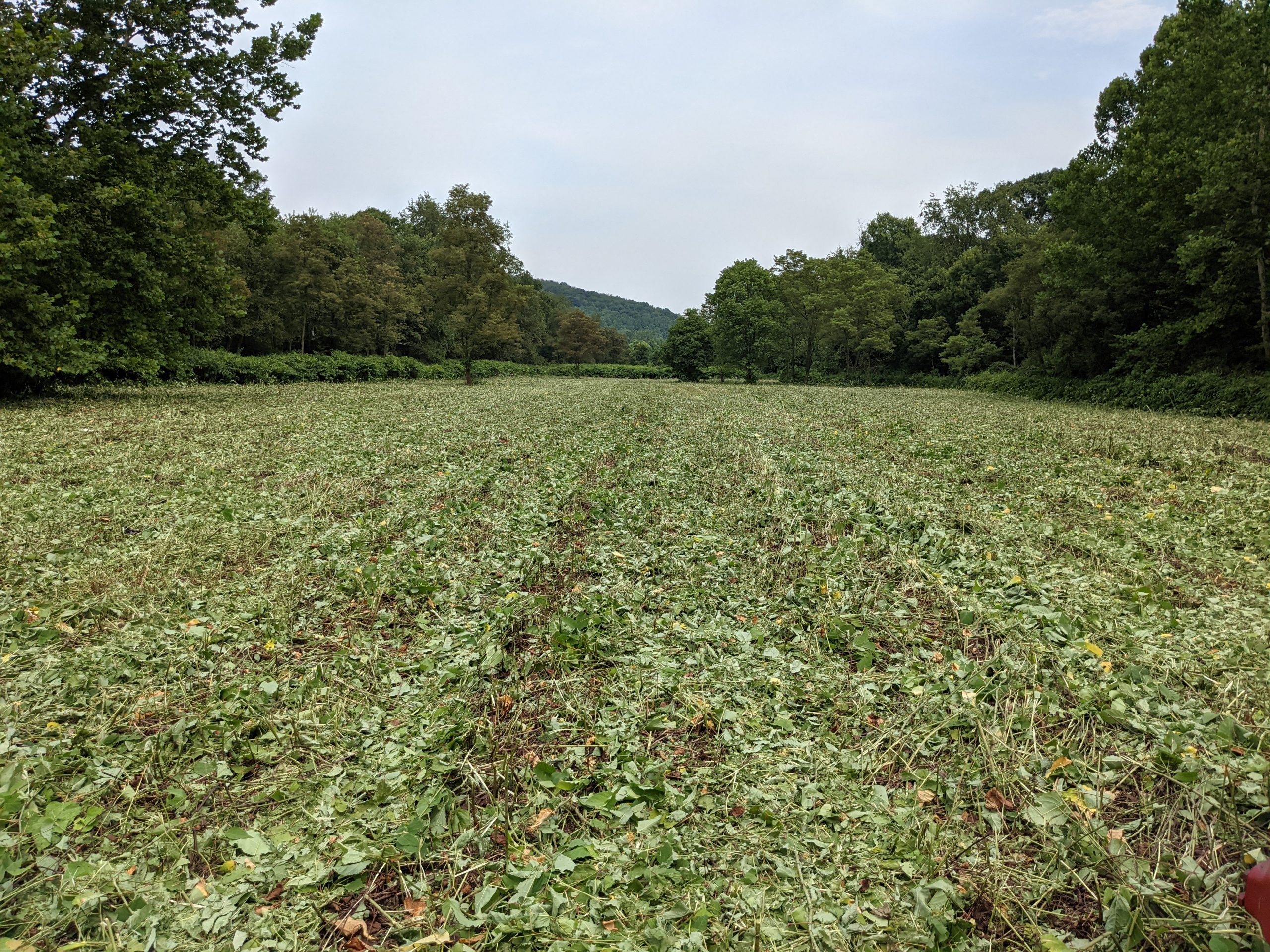The Squirrel Hill Preserve is a Monongahela village that is located in southwest Pennsylvania and listed in the National Register of Historic Places. Prior to the Conservancy acquiring Squirrel Hill in 2007, collectors had taken surface artifacts for several decades; however, the site’s subsurface deposits retain excellent integrity, and they have the potential to yield significant data regarding Monongahela village organization, cooking technologies, and regional trade networks.

Drone footage looking down on Squirrel Hill Preserve
Photo Credit: Chris Schaney, IUP Department of Geography, Geology, Environment, and Planning
The Department of Anthropology at Indiana University of Pennsylvania (IUP) conducted preliminary fieldwork there in the summer of 2016 as part of their six-week archaeological field school to train undergraduate and graduate-level students. Excavations confirmed the presence of a Johnston-phase occupation (A.D. 1450-1590) and showed that at least one earlier occupation also existed. The researchers also conducted a ground-penetrating radar survey that identified a large rectangular feature that appears to be significantly different in both size and shape than typical Monongahela domestic structures.
In 2022, IUP researchers, partnering with the Seneca Nation of Indians, returned to the site. This year’s work confirmed that the occupation of the site was more complex than initially believed. Shovel testing beyond the boundaries of the Conservancy’s property demonstrated that the site is almost double the size we initially believed it to be, making it one of the largest Monongahela sites in western Pennsylvania. Even more importantly, there appear to be multiple occupations spanning from A.D. 900 through the 1600s. Some of these findings may indicate the potential for trade, interaction, and even possible co-habitation with groups such as the McFate and Iroquoian cultures.
Many questions remain to be answered about this site, including determining the existence of a central plaza and/or stockade, understanding thein ternal organization of the site and how it grew over time, and how the site fits into the broader Monongahela settlement system in southwestern Pennsylvania.




